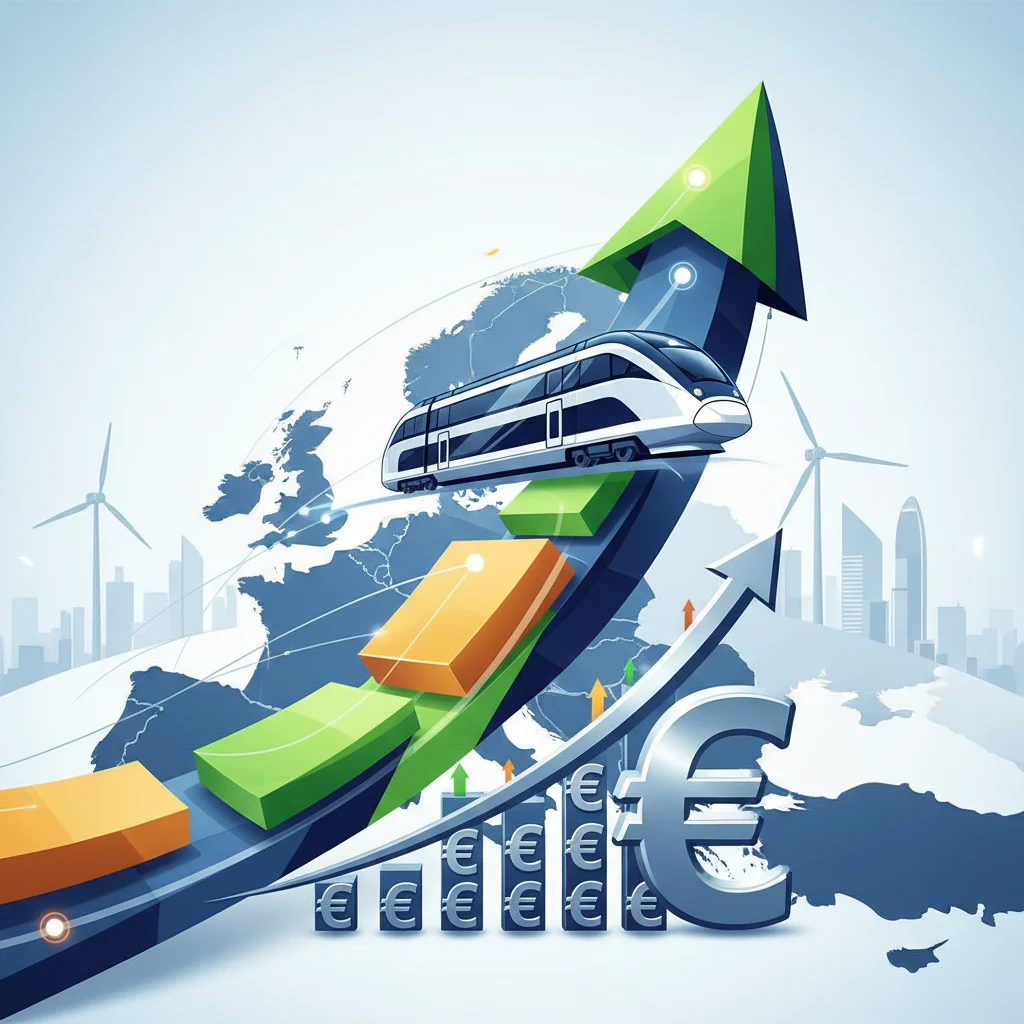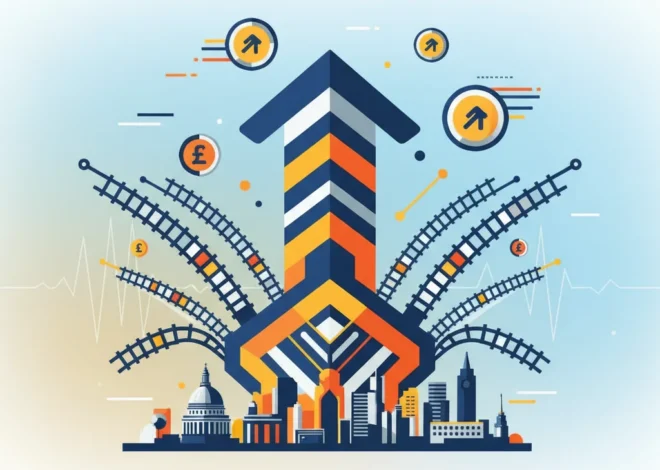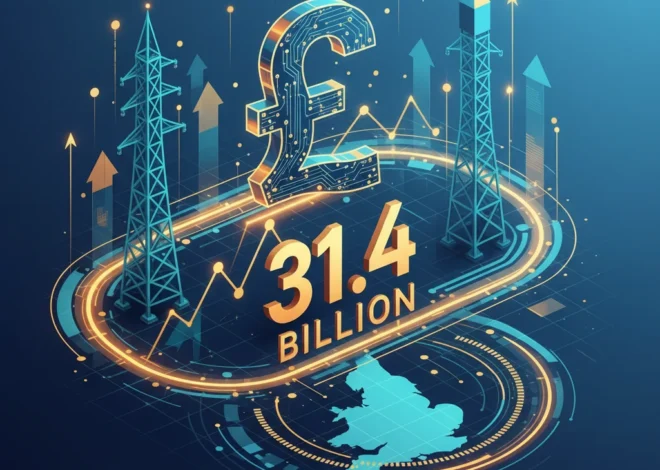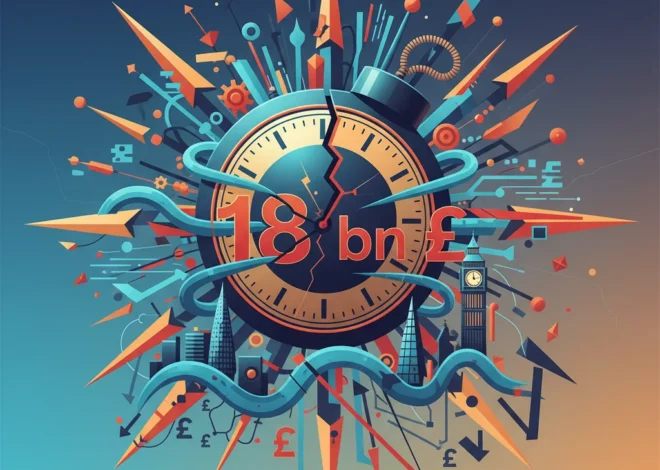
Eurostar’s Double-Decker Gambit: A Multi-Billion Euro Bet on Europe’s Economic Future
A New Era for Cross-Channel Travel: More Than Just a Train
In a move that signals profound confidence in the future of European travel and economic integration, Eurostar has announced its intention to procure its first-ever fleet of double-decker high-speed trains. These new trains would be the first of their kind to traverse the iconic Channel Tunnel, representing a monumental step in the evolution of cross-channel connectivity. While on the surface this is an upgrade to rolling stock, a deeper analysis reveals a sophisticated financial strategy and a powerful statement about the long-term health of the European economy.
This decision is not merely about adding more seats; it’s a calculated, capital-intensive investment designed to reshape the competitive landscape, enhance operational efficiency, and meet the surging demand for sustainable travel. For investors, finance professionals, and business leaders, Eurostar’s announcement is a crucial data point—a testament to long-term strategic planning in an era often dominated by short-term market volatility. It’s a story of infrastructure, investing, and a bold vision for a more connected continent.
The Strategic Calculus: Why Double-Decker, and Why Now?
Eurostar’s current fleet, primarily composed of the e320 and older e300 models, has served admirably. However, the company faces a classic economic challenge: operating at near-full capacity on its core routes, particularly during peak times. This capacity ceiling limits revenue growth and operational flexibility. The move to double-decker trains is a direct and aggressive solution to this bottleneck.
From a finance perspective, the logic is compelling. High-speed rail has immense fixed costs—track access fees, energy consumption, and staffing are significant expenses for every service that runs. By increasing the number of passengers per train by up to 40-50% (depending on the final configuration), Eurostar can dramatically improve its unit economics. This translates to:
- Higher Revenue Per Train Path: Each slot through the Channel Tunnel becomes significantly more profitable.
- Lower Cost Per Seat: Fixed operational costs are spread across a larger number of paying customers, boosting margins.
- Enhanced Competitive Stance: Increased capacity allows Eurostar to compete more aggressively on price with short-haul airlines, a market segment it has been steadily capturing due to its convenience and environmental credentials.
This strategic pivot is also a response to the evolving post-pandemic travel market. While business travel has been slow to recover fully, leisure travel has rebounded with vigor. Furthermore, a growing “flight shaming” movement and corporate ESG (Environmental, Social, and Governance) mandates are pushing more travelers towards rail. A recent report from the European Environment Agency highlights that rail travel accounts for a fraction of the greenhouse gas emissions of air travel, a fact that is becoming a powerful marketing tool and a driver of consumer choice (source).
Beyond Wall Street: Why the Real Value in Today's Stock Market Is Overseas
Unpacking the Multi-Billion Euro Investment
Acquiring a new fleet of high-speed trains is one of the most significant capital expenditures a transport operator can make. While Eurostar has not disclosed the exact value of the order, industry benchmarks suggest it will be a multi-billion Euro commitment. The Alstom Avelia Horizon, the double-decker TGV model currently being delivered to France’s SNCF (a majority shareholder in Eurostar), costs upwards of €35 million per trainset (source). An order for up to 50 trains, as has been reported, could easily approach the €2 billion mark.
This level of investing necessitates a complex financial architecture. Funding will likely be sourced through a combination of corporate bonds, syndicated loans from major banking institutions, and potentially equipment financing agreements. For analysts watching the stock market, the impact will be felt not just by Eurostar’s parent companies but also by the manufacturers. Companies like Alstom (France) and Siemens (Germany) will be competing fiercely for this landmark contract, and the winner will see a significant boost to its order book and a likely positive reaction in its stock price.
Below is a comparative look at Eurostar’s current primary fleet versus a potential double-decker successor like the Alstom Avelia Horizon, illustrating the scale of the upgrade.
| Feature | Current Fleet (Siemens e320) | Potential Double-Decker (Alstom Avelia Horizon) |
|---|---|---|
| Passenger Capacity | ~900 seats | Up to 740 seats (note: configurable, but often lower than single-deck due to space for stairs/services) – Editor’s Note: The BBC article implies a capacity increase, but standard Duplex models often have lower capacity than the e320. The new model will likely be a custom high-capacity design. |
| Length | 400 meters | 200 meters (can be coupled for higher capacity) |
| Energy Efficiency | High | ~20% lower energy consumption per passenger |
| Estimated Cost Per Trainset | ~€30 million (at time of purchase) | ~€35-40 million |
This investment is also a long-term play on interest rates and inflation. By locking in financing and placing orders now, Eurostar can hedge against future price increases for rolling stock and potentially secure favorable lending terms before any further tightening by central banks. It’s a forward-looking treasury and corporate finance decision as much as it is an operational one.
The Unseen Financial Technology Backbone
A project of this magnitude relies on more than just heavy engineering; it requires a sophisticated digital and financial nervous system. The role of modern financial technology (or fintech) is crucial, albeit often invisible to the public. Managing a multi-billion Euro transaction spanning several countries, currencies (EUR and GBP), and a complex web of suppliers requires cutting-edge solutions.
Advanced treasury management systems will be used to hedge currency risk, ensuring that fluctuations between the Euro and the Pound don’t derail the project’s budget. Supply chain finance platforms, a key area of fintech innovation, will allow smaller suppliers of components to be paid quickly, ensuring the production line runs smoothly. Even emerging technologies like blockchain could have a role. A private blockchain could be used to create an immutable record of high-value components, from the bogies to the traction motors, ensuring provenance, tracking maintenance schedules, and streamlining cross-border customs and regulatory approvals. This digital ledger provides a level of transparency and security that traditional paper-based systems cannot match, reducing risk and potential for disputes in a project with thousands of moving parts.
Geopolitics on the Menu: NATO's Defense Overhaul and the Economic Tremors of Trade Tensions
Navigating the Channel Tunnel’s Unique Challenges
The reason double-decker trains haven’t plied the route between London and Paris before is not for lack of ambition, but due to the unique technical and safety constraints of the Channel Tunnel. The tunnel has a smaller loading gauge (the physical clearance envelope) than many mainland European high-speed lines. Furthermore, its safety regulations, designed in the 1980s, are among the strictest in the world, with specific requirements for emergency evacuation that are more complex for a two-level train (source).
The new fleet will need to be a bespoke design, engineered to maximize interior space while fitting within the tunnel’s constraints and satisfying all safety protocols of the Channel Tunnel Intergovernmental Commission. This represents a significant engineering challenge, but one that manufacturers are confident they can solve with modern design and materials. The successful development of such a train would not only be a win for Eurostar but also a showcase of European engineering prowess.
Broader Implications for the European Economy and Green Investing
The ripple effects of this decision will extend far beyond the tracks. This order will sustain thousands of high-skilled manufacturing jobs at the chosen supplier and across its European supply chain for years to come. It’s a direct injection of capital into the continent’s industrial base, supporting growth and innovation.
More importantly, it solidifies high-speed rail’s position as the backbone of sustainable European transport. As the continent pushes towards its net-zero targets, shifting passenger traffic from air to rail is a critical component of the strategy. This investment makes that shift more viable and attractive. The enhanced capacity and efficiency will help keep ticket prices competitive, encouraging millions more to choose the greener option.
Let’s consider the environmental economics at play. A journey from London to Paris via Eurostar emits up to 90% less carbon than the equivalent flight. This is a powerful metric for the growing number of ESG-focused investment funds and corporations with internal carbon budgets.
| Transport Mode | Typical CO2 Emissions (London-Paris, per passenger) | Source |
|---|---|---|
| High-Speed Rail (Eurostar) | ~6 kg | Eurostar / Independent Analysis |
| Short-Haul Flight | ~68 kg | Google Flights / EEA Data |
| Car (Single Occupant) | ~75 kg | DEFRA / EPA Data |
By making the most environmentally friendly option also the most efficient and scalable, Eurostar is aligning its business model with the future of the global economy—one where sustainability and profitability are not just compatible, but inextricably linked.
Market Crossroads: AI Bubbles, Crypto's Niche, and the Human Factor in Finance
Conclusion: A Journey into the Future
Eurostar’s decision to order double-decker trains is far more than a simple fleet renewal. It is a masterclass in long-term strategic investing. It’s a calculated financial maneuver to dominate the cross-channel travel market, a significant engineering challenge, and a powerful vote of confidence in the economic vitality of Europe. By leveraging superior economics of scale and leaning into the powerful trend of sustainable travel, Eurostar is not just preparing for the future; it is actively building it. For anyone involved in finance, business, or the European economy, the message is clear: the future is on track, and it’s arriving on two levels.


